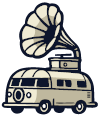Eb
Blues Scale
(Originally D#)
Note: D# Minor → Eb Minor
D# Major contains double sharps (F##, C##) making it impractical to read
Eb Major is the enharmonic equivalent used by musicians. Same pitches, better notation.
Scale Notes
Eb1+0 semitones
Gb2+3 semitones
Ab3+5 semitones
A4+6 semitones
Bb5+7 semitones
Db6+10 semitones
Scale Information
| Root Note | Eb (from D#) | Scale Type | Blues Scale |
| Category | Blues | Number of Notes | 6 |
Interval Pattern
Semitones: 0 - 3 - 5 - 6 - 7 - 10
Pattern repeats every octave (12 semitones)
D#0
E1
F2
F#3
G4
G#5
A6
A#7
B8
C9
C#10
D11
← Scroll horizontally to see all notes →
Understanding the Pattern: The numbers above show the interval distances between scale notes in semitones (half-steps). The highlighted notes like this are the notes that belong to this scale. This pattern can be moved to any starting note to create the same scale in different keys - that's how scales work across all 12 keys!
Scale Overview
Description
Minor pentatonic with added flat 5th (blue note)
Musical Context
This blues scale contains 6 notes and is commonly used in Jazz and Saxophone music. This scale requires some musical experience to master effectively.
Characteristics
BluesyExpressiveSoulfulGritty
Practice Guide
Key Signature
3 flats (Bb, Eb, Ab)
Eb - Gb - Ab - A - Bb - Db
Difficulty Level
IntermediateCircle of Fifths
Common in jazz, saxophone music, and wind ensembles
Common Genres
JazzSaxophoneClassicalWind ensemble
Common Uses
Blues
Jazz
Rock
Soul music
Practice Tips
- • Practice ascending and descending patterns
- • Try different rhythmic variations
- • Experiment with skipping notes (thirds, fourths)
- • Use as a basis for improvisation
